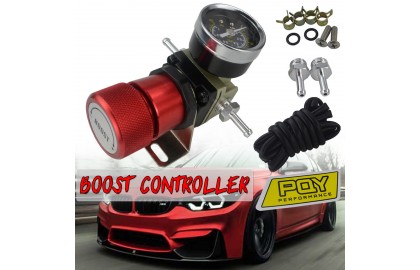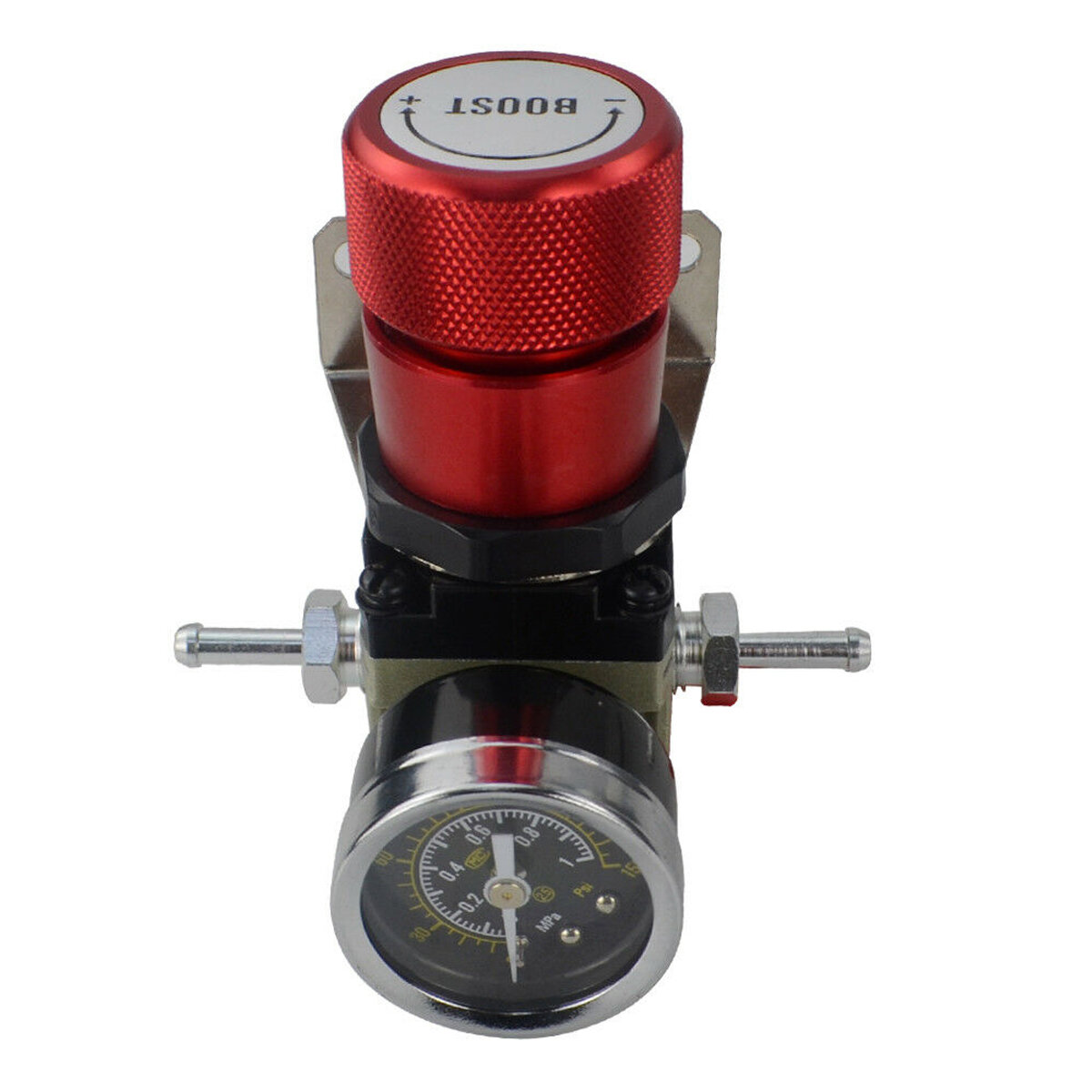Universal Car Adjustable Manual Gauge Turbo Boost Controller Part1


The turbocharger controller is a must-installed part for many car enthusiasts who refit the turbo. However, when it comes to the specific internal installation and working principle, many friends do not know much about it. Today, the editor will take you to briefly understand the working principle of the turbocharger controller. I believe that a deeper understanding of it will make daily use handier.
This is a schematic diagram of the connection of the components in the engine compartment of the turbocharger controller. The top sensor unit in the figure is used to receive the vacuum signal of the intake manifold and the pressure signal of the compressed air from the turbine, and transmit the signal to the The solenoid valve unit controls the opening and closing of the vacuum valve to achieve the purpose of controlling the pressure value.
First of all, there is a vacuum tube on the sensor unit connected to the position of the oil pressure regulator behind the throttle valve (connected with the original oil pressure regulator through a Y-shaped adapter), when the throttle valve is closed (ie when the throttle is released) ), a vacuum is formed in the intake manifold, the vacuum signal is transmitted to the sensor unit through the above vacuum tube, and the sensor transmits the converted electrical signal to the solenoid valve unit, the solenoid valve controls the vacuum valve (waste-gate valve) to open, and the exhaust gas does not pass through the turbine. Exhaust from the bypass line to stop the turbine from compressing air. Since the vacuum tubes are exposed to fresh air, a small air filter is added.
In addition, how does the turbo controller control the boost value? There is also a pipeline on the solenoid valve unit connected to the pipeline between the turbine and the intercooler, which is used to monitor the pressure value of the compressed gas sent into the pipeline by the intake impeller in the turbine. When the measured pressure value exceeds the preset boost value, the solenoid valve unit sends a signal to the sensor unit to tell the sensor to appropriately reduce the opening and closing degree of the vacuum valve, thereby controlling the amount of exhaust gas passing through the power turbine to stabilize and control the boost pressure value effect.
Compared with the naturally aspirated engine, the turbocharged engine has a wider range of power output. The low-speed torque platform allows the car to accelerate smoothly and reduce fuel consumption at the same time, but the failure rate of the highly responsible power system will also increase slightly, especially after the turbo car is modified. , there are more chances of problems, so the owners of turbo modified cars need to have an understanding of the health index of their car, often self-diagnose, and find problems in advance to be more fun.
Although the durability of the new turbo engine is much better than before, especially the European turbo engines are mostly evolved from the original high-yield naturally aspirated engines, and the failure rate is already very low, but I believe that the appetite of the modified riders will not stop In the original factory, even if you only brush a first-order program, the possibility of a situation will increase a lot, not to mention the re-engineered, greatly re-engineered engine. Therefore, knowing more about the condition of your car can also avoid more serious problems. If you want to understand the working condition of the turbo engine, you must first install a turbo meter, otherwise the fault will not be able to be found, which requires special attention.
The common problems of turbo cars mainly include "unsteady idle speed", "speed limit", "abnormal supercharging", etc. The culprits of the above reasons are often vacuum leakage, electronic error or turbine damage.
